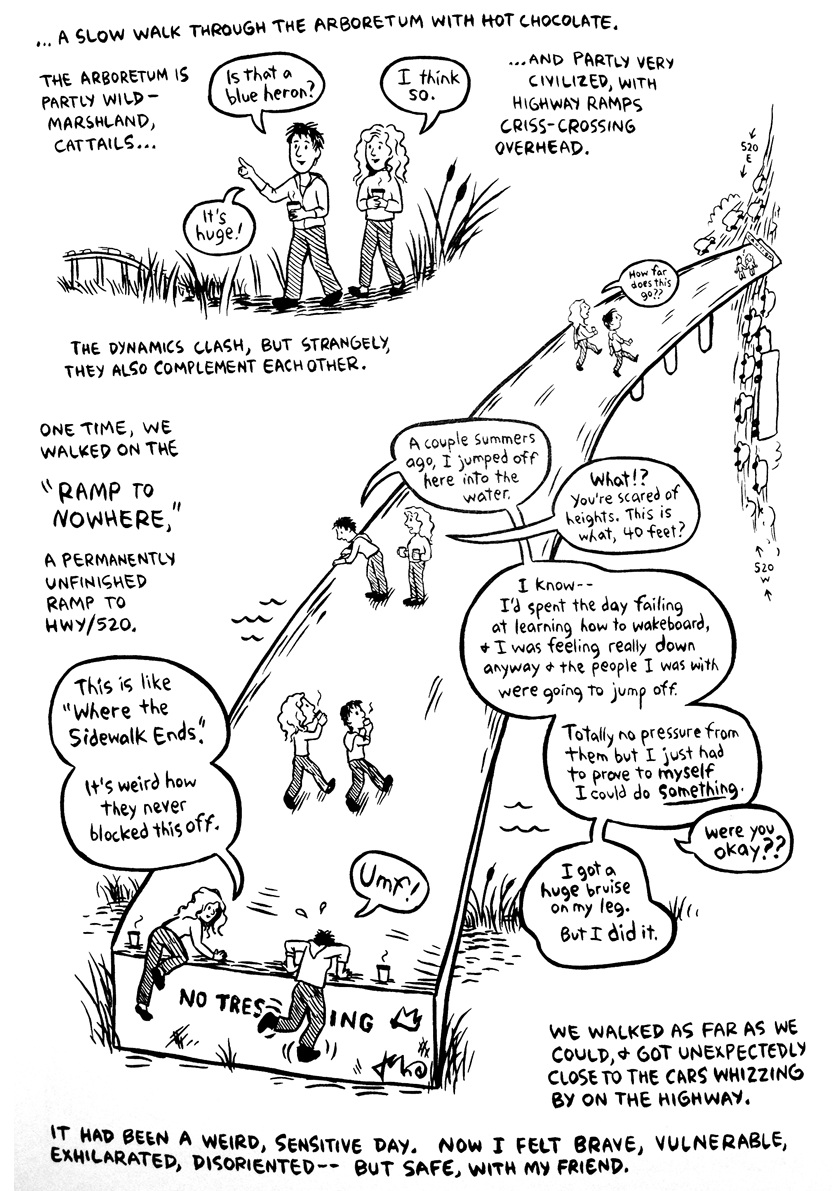


Forney does not sugarcoat the profound sense of loneliness she felt as she cycled in and out of mania and depression. An Unquiet Mind by Kay Jamison, for example, is a particular book that was mentioned within the pages of Marbles.

Through the act of reading, Forney also found comfort, reprieve, and solidarity. Truth be told, there is such comfort to be found in placing yourself along a continuum–of knowing of the others who came before you. Forney discovers, like so many others, that should she “join the ranks” of those artists who came before her who also suffered with bipolar disorder (historically referred to as manic depression), she would find herself in good company. Would treatment of her newly-diagnosed illness hamper her creative energy? Would treatment change or dull her creative identity? It is certainly a terrifying thought to consider that medications may not only not work, but they may change an essential part of who you are–an essential part that you may not want to change. One of the defining themes in this work is the interplay between madness & creativity. These is a genuine, candid representation of mania and depression. A graphic novel like Marbles is another step in the right direction of normalizing and de-stigmatizing mental illness. But Marbles is a victory in the fight to de-bunk the myth that people with mental illness are certifiably “crazy”, “scary”, and “dangerous”. Forney’s autobiographical sketch even compares identifying people who suffer from bipolar with “outing” someone –the often intentionally cruel practice of shining a light in a calculated way in order to “expose” someone as unusual or different. I don’t know anyone who isn’t touched by mental illness in some capacity, either through personal experience or knowing or loving someone who struggles–often silently-with bipolar or another mental illness. Yet it’s still an elephant in the room or–if not an elephant–some other misunderstood creature who looks a lot like your neighbor, sister, boyfriend, or cousin. For the skeptics who doubt that graphic novels can be emotionally complex & deeply moving, try reading Hole in the Heart: Bringing up Beth, a 2016 work of graphic medicine about raising a daughter with Down’s Syndrome.You won’t find a summary of Forney’s autobiographical memoir here: just read it for yourself. Marbles: Mania, Depression, Michaelangelo, & Meinitially jumped out at me, like so many graphic novels do, because of the colorful artwork on the cover but Ellen Forney’s frank, funny, and painful reckoning with the depression & mania that accompany Bipolar disorder is honest, brave, and thought-provoking. In the past few years, I think it’s safe to say I’m hooked on graphic novels! I don’t make it out of the library on most days without bringing at least 1 new title home to read (though I usually bring a bag-full!).


 0 kommentar(er)
0 kommentar(er)
